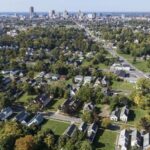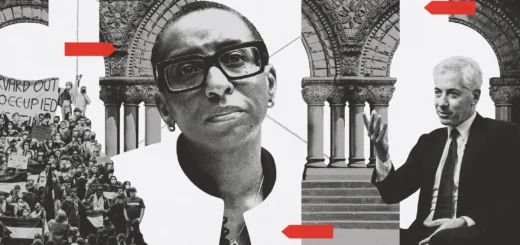The Four Horsemen of Structural Racism

Professor at University at Buffalo
The dramatic response to the killing of Michael Brown raises the theoretical question, “What is the meaning of Ferguson in this Age of Neo-liberalism?” While much has been written about the Brown shooting, we seek to dive deeper, and examine the community-level structural dynamics that spawned that deadly encounter. We do this by focusing on the role of the black neighborhood as a durable and crucial site where social class inequality is transmitted, generated, maintained and reproduced. For African Americans, then, residential mobility is contextual mobility. Using this theoretical construct, we seek to identify and analyze those forces of structural racism that under-develop black neighborhoods.
The paper will be divided into two parts. The first part discusses the migration of blacks to Ferguson between 1970 and 2010, and then it explores the forces of neighborhood underdevelopment that were triggered by the movement of blacks to this mostly white suburb. The final section discusses the findings of the study and their implications.
Ferguson: Moving to Opportunity?
Between 1950 and 1970, urban renewal projects in St. Louis City combined with the influx of thousands of black newcomers to spark a mass exodus of blacks into the northern suburbs. Those black migrating to Ferguson, then a predominately white suburb, thought they were moving to opportunity–a place where they could prosper and build a better life for themselves and their families.
From White to Black
Things did not happen as blacks anticipated, however. Over the next forty-five years, the black experience in Ferguson was affected by white outmigration, the subprime mortgage crisis, housing abandonment and the dynamics of metropolitan inequality. The interaction of these powerful structural forces of racism drove the underdevelopment of Black Ferguson and created obstacles to the black dream of finding “opportunity” in that suburb. From 1970 onward, Ferguson’s black population grew, but as blacks moved in, whites moved out. The neighborhood change process was a classic reenactment of the racial tipping point theory. Within 40 years, Ferguson’s white population plunged from 99% to 29%, as it transitioned from a mostly white to a mostly black suburb.
The Subprime Mortgage Crisis
The dream of finding “opportunity” in Ferguson took a big hit in 2007-2008, when the subprime mortgage crisis erupted. Black Ferguson is a mixed-income community, where homeowners and renters live together, often on the same block. Renters outnumber homeowners, and the physical condition of their rental units is the key indicator of the viability and strength of the neighborhood housing market. This is significant because black neighborhood are commodities, embedded in a housing market, where rental property owners, banks and financial institutions seek to maximize their profits. In Ferguson, the subprime mortgage crisis had a triple impact on black neighborhoods. Although it impacted the entire community, the crisis affected black homeowners and renters differently. To understand the implications of this, we need to analyze the experiences of both groups separately.
The Homeowner Class
The homeowning class anchors Black Ferguson, and about 46% of black households fall into this category. The mortgage crisis devasted them. In Ferguson, a staggering 58% of black mortgages are underwater. These owners owe the banks more than their homes are worth. The situation is dire. Their positive home equity has been flipped to negative equity, wiping out wealth, diminishing consuming power, and jeopardizing their financial security. These blacks cannot sell their homes, unless the bank agrees to a short-sale, and their other options, such as defaulting, range from bad to very bad. The underwater mortgage crisis has also depressed the entire Ferguson housing market, threatening the home investment of all blacks, including those without mortgage issues.
The Rental Class
The subprime crisis is also affecting the low-income rental market, and in so doing, it is placing the entire black community at-risk of physical decay, declining property values and housing abandonment. The culprit is the flipping of foreclosed homes to rentals. Across the nation, a growing number of Hedge Funds, private equity groups, and other investors are profiting off the subprime crisis by buying foreclosed homes from banks and turning them into rentals. The largest investors are focusing on the high end of the market, and this has opened the door for smaller investors, such as Raineth Homes, headquartered in Los Angeles, to carve out a niche in the low-income market segment.
The invasion of Ferguson by institutional investors is troubling. In neighborhoods dominated by low-income renters, the physical appearance of rentals shape the visual image of the community and affects property values, along with the viability of the neighborhood housing market. The investor’s attitude toward their rentals is crucial in this scenario. And their attitude is determined by the calculus of the low-income rental market. For investors to generate a profit, tenants must pay rents that exceed the cost of maintenance, operations, upgrades, and property taxes.
If this does not happen, the property owner will cut back on expenses until the bottom line is hit. The probablity of investors generating a profit and sustaining the upkeep of low-income rentals is not good. In Ferguson, for example, the median household income of black renters is $21,000 and about 90% of the rental units are fifty, or more years, old. When low-incomes meet old housing, the result is always toxic. The reason is such dwellings require substantial maintenance and upkeep, and the cost of repairs can be overwhelming. At any rate, if the rental calculus does not work, owners will allow their properties to deteriorate, becoming a drag on the entire community.
This danger does not concern predatory investors, such as Raineth. They are not community builders. Their goal is to profit by flipping foreclosures to rentals. Since 2011, Raineth has acquired 72 single-family homes in Ferguson, and converted a significant number to low-income rentals, targeted for single mothers, eligible for Section 8 Housing Vouchers. While it is too soon to grade them and other corporate investors, the early returns portend trouble. Some renters have already registered complaints, and although their grievances are minor, we expect the grumbling to grow louder over time.
The private housing market has never provided low-income renters with high quality, affordable housing. According to The National Housing Coalition there is not a single place in the United States where a full-time minimum wage worker can afford a one- or two-bedroom rental unit at a Fair Market Rate. There is no reason to believe that Raineth will succeed where others have failed. The rental calculus is unyielding on this profitability question. If cost exceeds profits, the property owner will cut back until profits exceed costs. It is that simple. Hence, in Ferguson, the expected outcome is that private investors will fail in their quest to provide low-income blacks with quality, affordable rentals. Thus, we expect these rentals to eventually deteriorate and spawn neighborhood decay and property decline.
Housing Abandonment
This brings us to another danger lurking in the background. Ferguson is a shrinking suburb that lost 28% of its population between 1970 and 2010. This, combined with the foreclosures and the depressed housing market, may cause abandonment to become a serious problem. There are currently about 934 (39%) vacant housing units in the Greater Ferguson area that are not for sale or rent. The addition of a large inventory of vacant and abandoned units to the growing inventory of rental housing units will further depress the Ferguson housing market, making neighborhood development even more challenging. This exemplifies the dilemma Ferguson is facing. In the short term, corporate investors are reducing the number of potential abandoned properties, while in the long term, they are sowing the seeds of neighborhood deterioration. This is a classic Catch-22.
Metropolitan Inequality
The final impact of the subprime crisis to be discussed are those that befall local government. Ferguson, which is dependent on sales and property taxes for revenues, is being confronted with the predicament of a declining population that is becoming poorer, while having greater socioeconomic needs. Thus, at the very moment that Ferguson needs increased resources, the subprime crisis is depressing property values and curtailing consumer spending, which, in turn, is intensifying fiscal stress on local government. This stress will eventually lead to spending cuts and a reduction of services, which will generate additional socioeconomic problems for the black community.
This is a structural predicament caused by metropolitan inequality. Ferguson, for example, is one of 90 municipalities in St. Louis County. It–along with other northern suburbs–is literally walled off from the more prosperous western suburbs. A comparison of the per capita income of Ladue, a western St. Louis suburb, with Ferguson and select northern suburbs will illustrate the point. The per capita income in Ladue is $90,000 annually. In Ferguson, it is $18,000; Black Jack, $23,000; Berkeley $14,000, and in Kinloch, $9,000. Ladue is 94% white and Ferguson, Black Jack, Berkeley and Kinloch are all more than 60% black. This metropolitan inequality is institutionalized and legitimized by the metropolitan governance structure, which has created a geography of race-class segregation that is reflected in developed and underdeveloped suburbs.
Conclusion
Ferguson is not anomalous. In this essay, we illustrate the ways in which structural racism interacts with individual racism to perpetually underdevelop black neighborhoods. In this analysis, we highlighted the outmigration of whites, the subprime mortgage crisis, housing abandonment and metropolitan inequality to illustrate the dynamics of black neighborhood underdevelopment in action. Most significantly, we sought to demonstrate that black residential mobility is a form of contextual mobility. Regardless of where blacks move in the urban metropolis, the forces of structural racism will find them and then underdevelop their neighborhoods. The hypothesis is that neoliberal metropolitan development automatically triggers black neighborhood underdevelopment. Thus, the narratives of various black neighborhoods in the metropolis will differ, and so too, will the plots and subplots, but the endings will always be the same.
Patrick Sharkey, a sociologist at New York University, studied children born from 1955 to 1970 and found 4% of whites and 62% of blacks across had been raised in poor neighborhoods. A generation later, the same study showed that virtually nothing had changed. Whites born into affluent neighborhoods tended to remain in affluent neighborhoods, and blacks born into poor neighborhoods ended to remain in poor neighborhoods. Sharkey concluded that blacks are stuck in place.
Our study confirms the findings of sharkey, but also we posit that black neighborhoods are now the epicenter of structural racism and social class inequality in the United States. As such, the fight to develop them, and radically transform the larger metropolis in which they are embedded, should be the top priority in the struggle to advance black life and build the just metropolitan city. This challenge, however, will require more than just changing the actions of individual political agents. Also, it will require rethinking the urban political economy, re-imagining institutions and systems, and building coalitions aimed at changing the laws and the policies that sustain structural racism.
Author Profile
Latest entries
 Henry Louis Taylor, Jr.01/20/2025Reflections on Martin Luther King, Jr.’s Dream
Henry Louis Taylor, Jr.01/20/2025Reflections on Martin Luther King, Jr.’s Dream Henry Louis Taylor, Jr.01/09/2025The Trump Inaugural Parade is a Political Event
Henry Louis Taylor, Jr.01/09/2025The Trump Inaugural Parade is a Political Event Henry Louis Taylor, Jr.05/04/2024The Occupation of Hayes Hall: Student Rebellions and Remaking the U.S. UniversityThe Occupation of Hayes Hall
Henry Louis Taylor, Jr.05/04/2024The Occupation of Hayes Hall: Student Rebellions and Remaking the U.S. UniversityThe Occupation of Hayes Hall Henry Louis Taylor, Jr.03/21/2024Ryan’s infill housing strategy is the right plan for Buffalo
Henry Louis Taylor, Jr.03/21/2024Ryan’s infill housing strategy is the right plan for Buffalo



